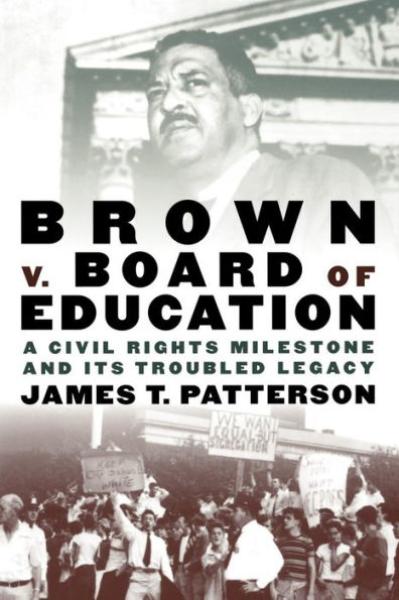Description
Here, in a concise, moving narrative, Bancroft Prize-winning historian James T. Patterson takes readers through the dramatic case and its fifty-year aftermath. A wide range of characters animates the story, from the little-known African Americans who dared to challenge Jim Crow with lawsuits (at great personal cost); to Thurgood Marshall, who later became a Justice himself; to Earl Warren, who shepherded a fractured Court to a unanimous decision. Others include segregationist politicians like Governor Orval Faubus of Arkansas; Presidents Eisenhower, Johnson, and Nixon; and controversial Supreme Court justices such as William Rehnquist and Clarence Thomas.
Most Americans still see Brown as a triumph--but was it? Patterson shrewdly explores the provocative questions that still swirl around the case. Could the Court--or President Eisenhower--have done more to ensure compliance with Brown? Did the decision touch off the modern civil rights movement? How useful are court-ordered busing and affirmative action against racial segregation? To what extent has racial mixing affected the academic achievement of black children? Where indeed do we go from here to realize the expectations of Marshall, Ellison, and others in 1954?
IPatterson shrewdly explores provocative issues that still swirl around "Brown v. Board of Education," including whether the decision touched off the modern civil rights movement and how useful court-ordered busing and affirmative action have been in removing racial segregation. 36 photos.
Patterson's new book is a compelling examination of the history behind the decision and the realities of enforcing it.--Robin Dougherty, The Boston Globe
Absorbing book. With admirable balance, Patterson synthesizes much of the debate. His streamlined rendition reminds us that justices have always considered the social, political, and legal consequences of their decisions.--Laura Kalman, The New York Times Book Review
Penetrating history-cum-analysis.--Jonathan Yardley, The Washington Post Book World
This volume by a widely recognized historian of twentieth-century America presents a highly readable and well-organized overview of events leading up to the 1954 Brown decision, the decision itself, and its aftermath...Patterson does a nice job of sketching the broad outlines and placing developments in a larger context--The Journal of Southern History
Product Details
- Oxford University Press, Brand
- Dec 12, 2002 Pub Date:
- 0195156323 ISBN-10:
- 9780195156324 ISBN-13:
- 320 Pages
- 9.34 in * 6.28 in * 0.88 in Dimensions:
- 1 lb Weight:




